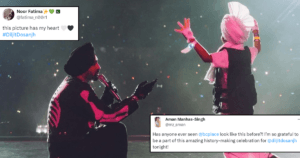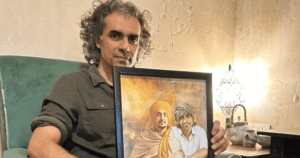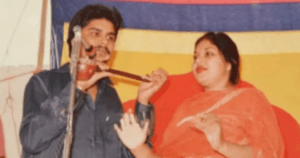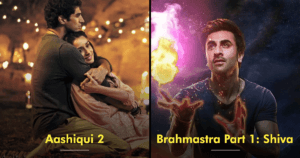Finding good music has always been very sudden for me. I like specific artists but it’s not like I follow them closely, so most good songs come to me as part of random exploration. What this boils down to is the fact that I don’t see myself as someone who can critique music simply because I don’t fully understand it. Understanding music and enjoying it are two different things. So this is not a critique, it cannot be – this is just appreciation for a newfound artist. And here is how it goes. Recently, I was made to witness Chaar Diwaari and his work.
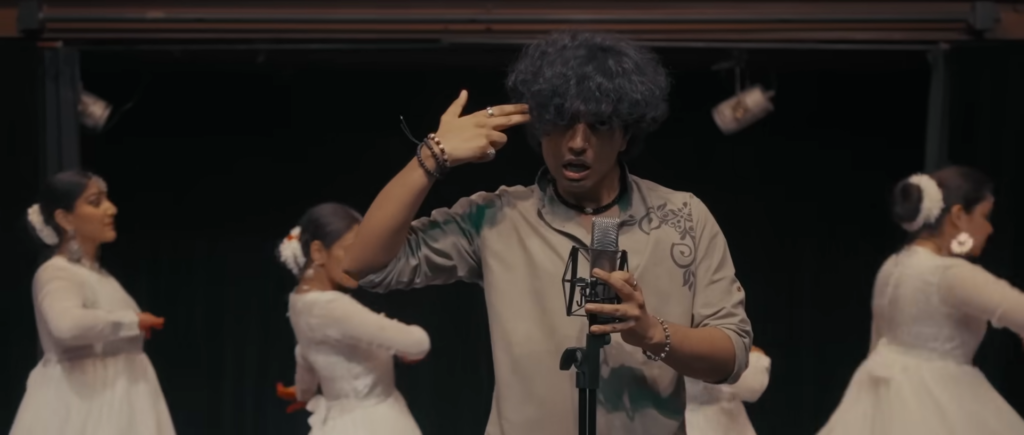
If or not Indian hip-hop is your thing, Chaar Diwaari deserves a chance because his work is different. On my first sitting, I heard Jhaag and Barood, and there was a sudden inclination to LOOK more than LISTEN. So, one of the first experiences associated with the artist was also about the association of his music with visuals. Sitting through a Chaar Diwari song cannot just be about the song. Clearly, there’s always a story that seems to matter to him.
Hip-hop was introduced as a means for expression, and that has stayed. But then, art always does that. The added layer to hip-hop comes down to expressing subjects that are otherwise uncomfortable for mainstream discourse. In that sense, Chaar Diwari is setting up the Indian hip-hop medium that does what is supposed to do. Or like the artist describes it – liberating.
“Hip-hop, I find, is the most liberating of all genres because I think anybody can do it. All we need to do to express ourselves is just to write and pick up a beat online and just say what you feel. That is so liberating.”
In many ways, my introduction to desi hip-hop is also Chaar Diwari. The inclination may not have exactly started with exploring the genre. As someone who’s just intrigued by visual storytelling in general, his music videos felt like this brand new take on Hindi music. You’ll see trippy shots, shots that don’t follow rules, and just visuals that are experimental. If I may, it’s like watching your intrusive thoughts play out on-screen.
But there has to be more reason to why a twenty-something artist saw this sudden shot to fame. This is not mainstream work, so attention is something that comes in bits. So, what stands out in this case is the artist’s will to create. According to him, he’s a writer before being anything else. His production and visual sense is something that genuinely sticks with the audience – what I’m saying is, he does it all – and he’s clearly doing it well. And it stems from just liking what he does – or creating what he wants to see himself.
What makes the entire experience better is the fact that his lyrics and music dig deeper. They are not simplistic, they try. They may not always land with you, because music is subjective. But you will end up appreciating it for its sheer ability to see and address nuance. For me, with whatever little insight I have about music, hip-hop, or well, Chaar Diwari, I see him as a writer first. This is particularly because of his ability to understand the need of good lyrics in a song. Mera Saman Kahan Hai is the first example, of many instances that come to mind. He had said, ‘saman kahan hai’ for him meant ‘where’s my share of happiness’, but the song just left meaning different things to different people. If that isn’t the beauty of music, I don’t know what is.

When it comes to hip-hop or just experimental music in general, I feel like I know too little to be able to comment. But if a song, any song makes you feel things then you get it, even if you don’t technically get it. If anything, it could be a start to appreciating new kind of music, in general. For Indian hip-hop, Chaar Diwari may be a start for me.

All I can sense is that if Indian hip-hop is noticing a revolution, Chaar Diwari is very much at the centre of it.




